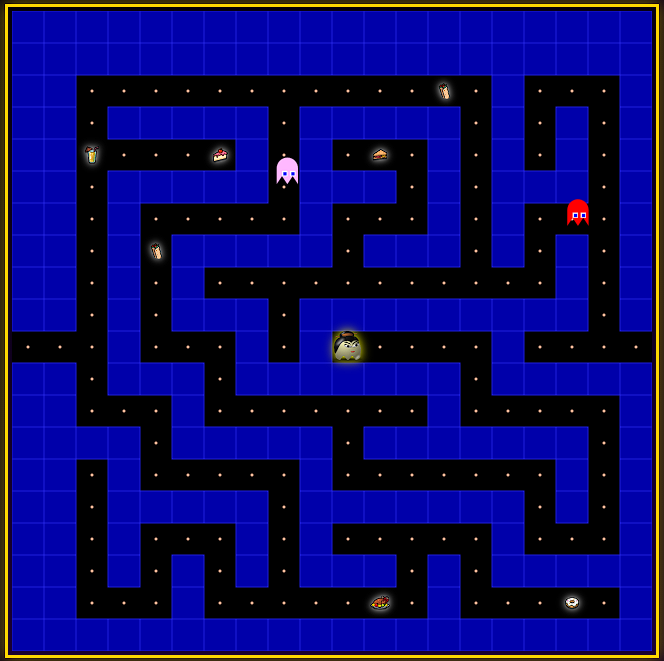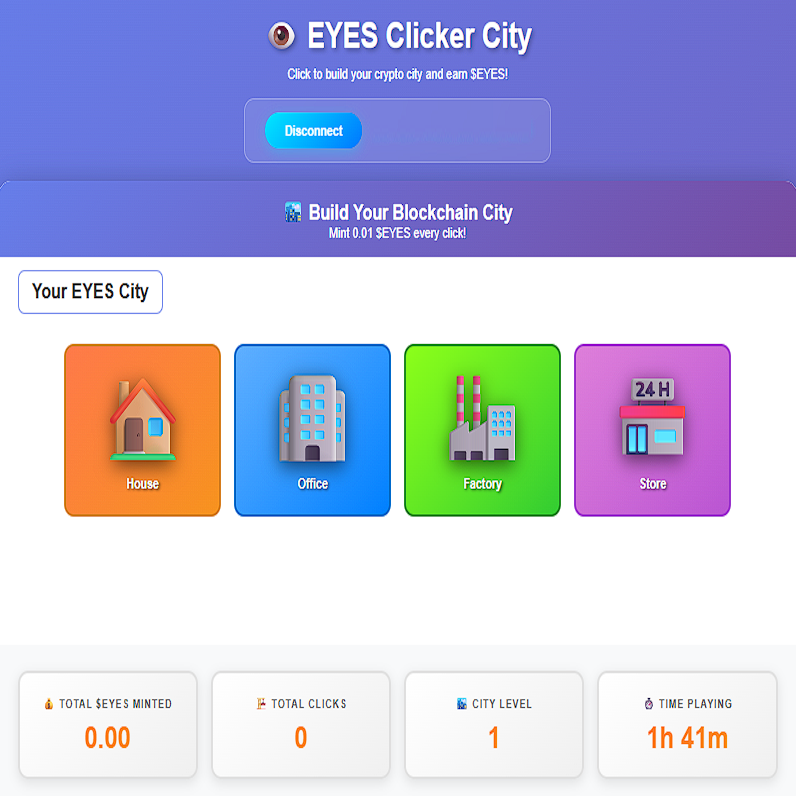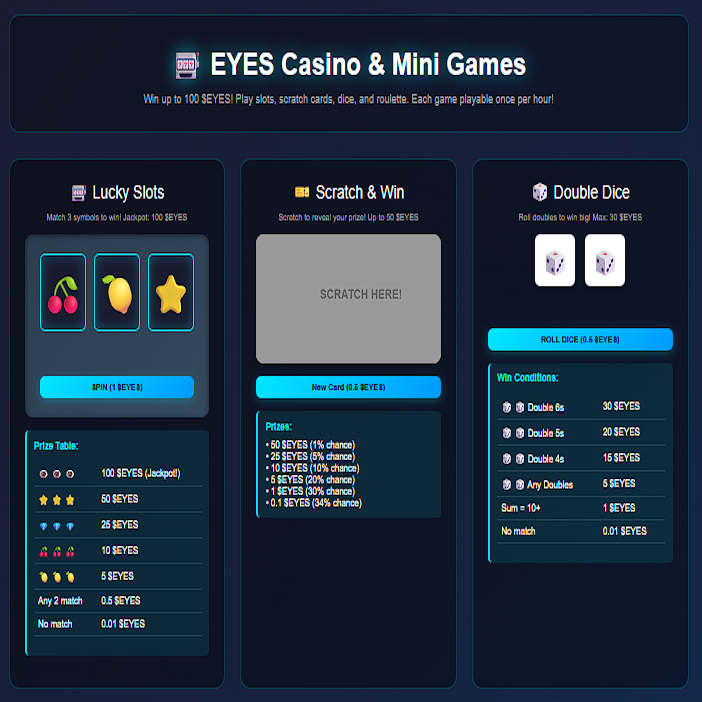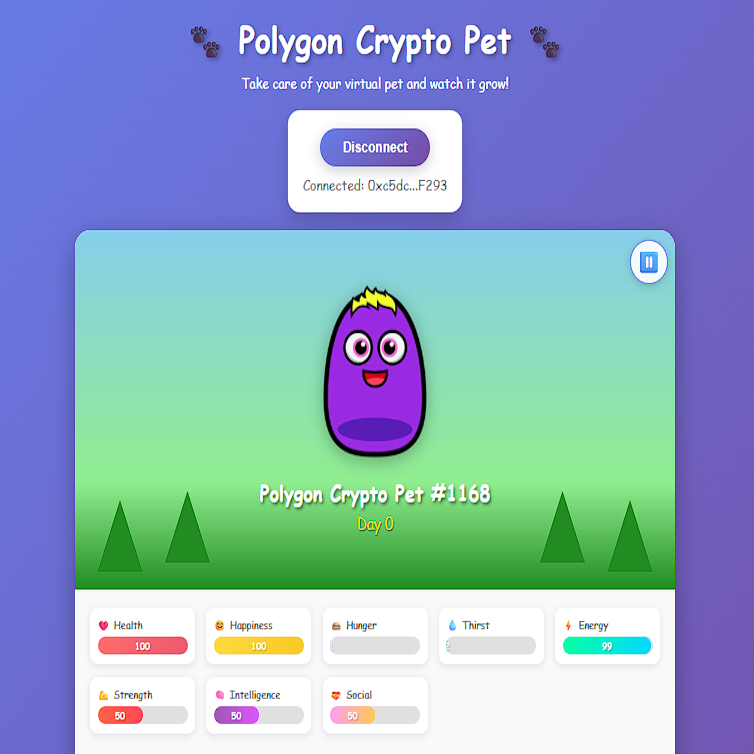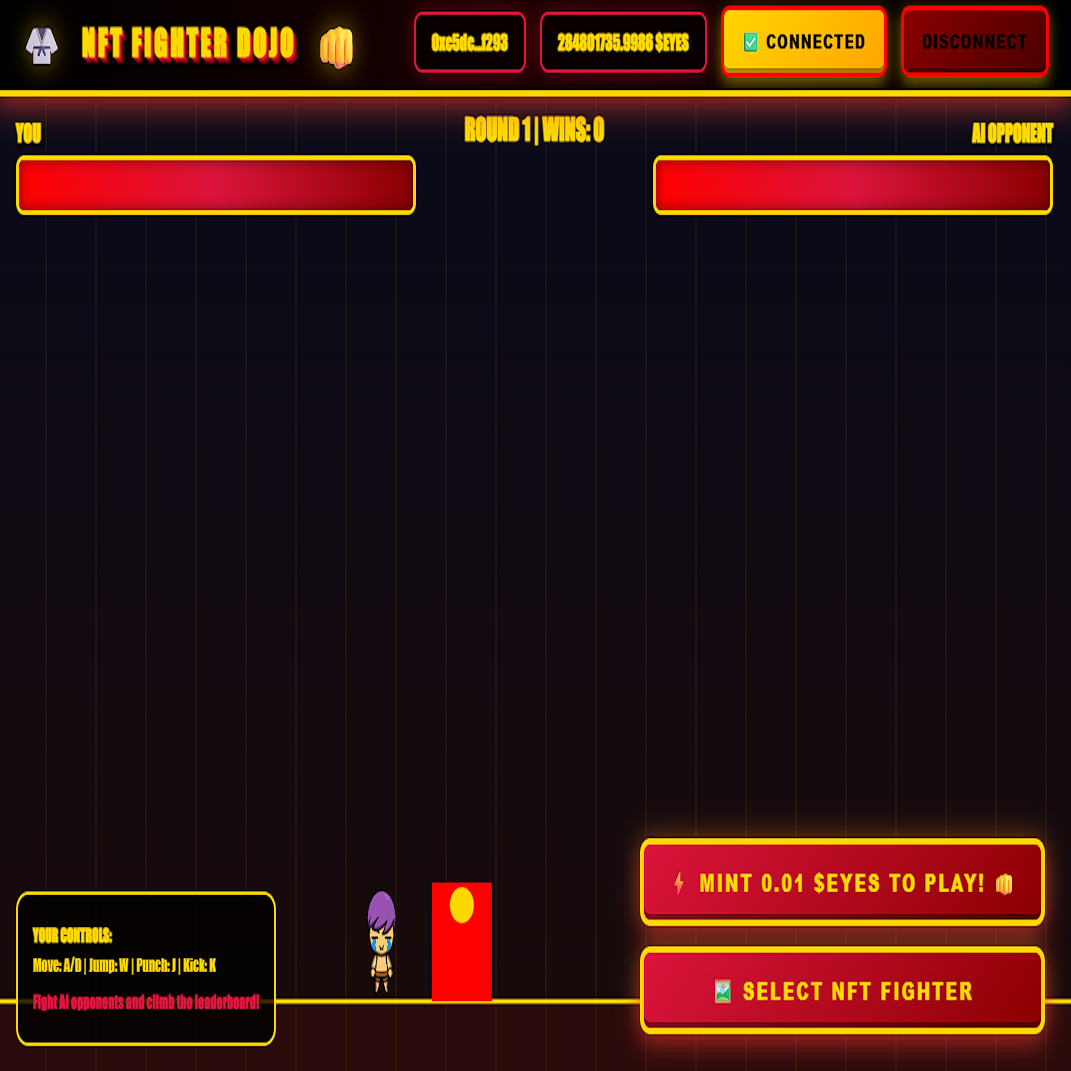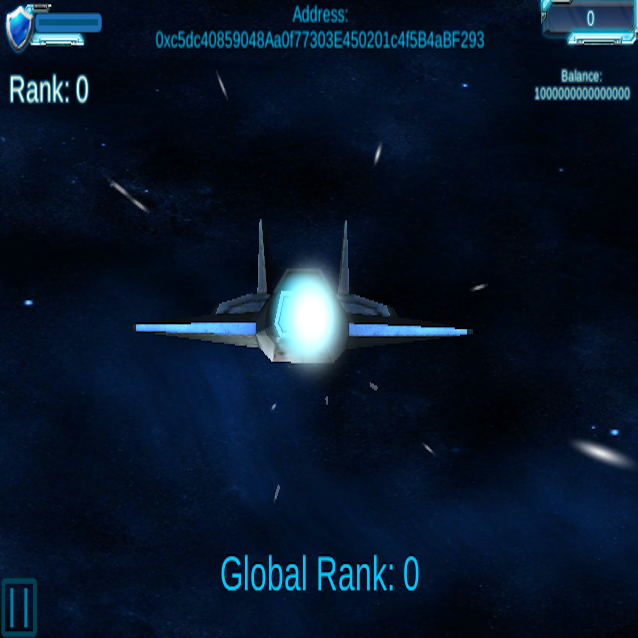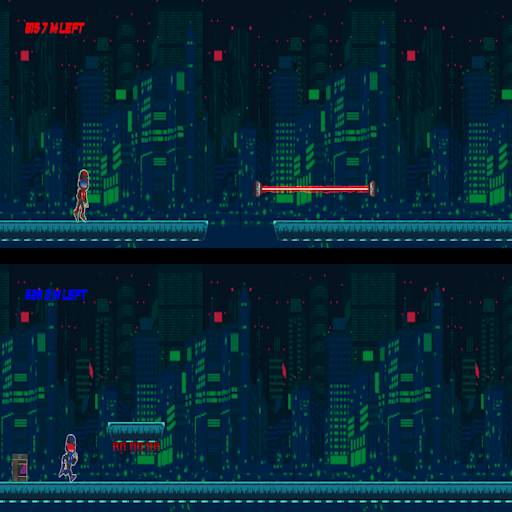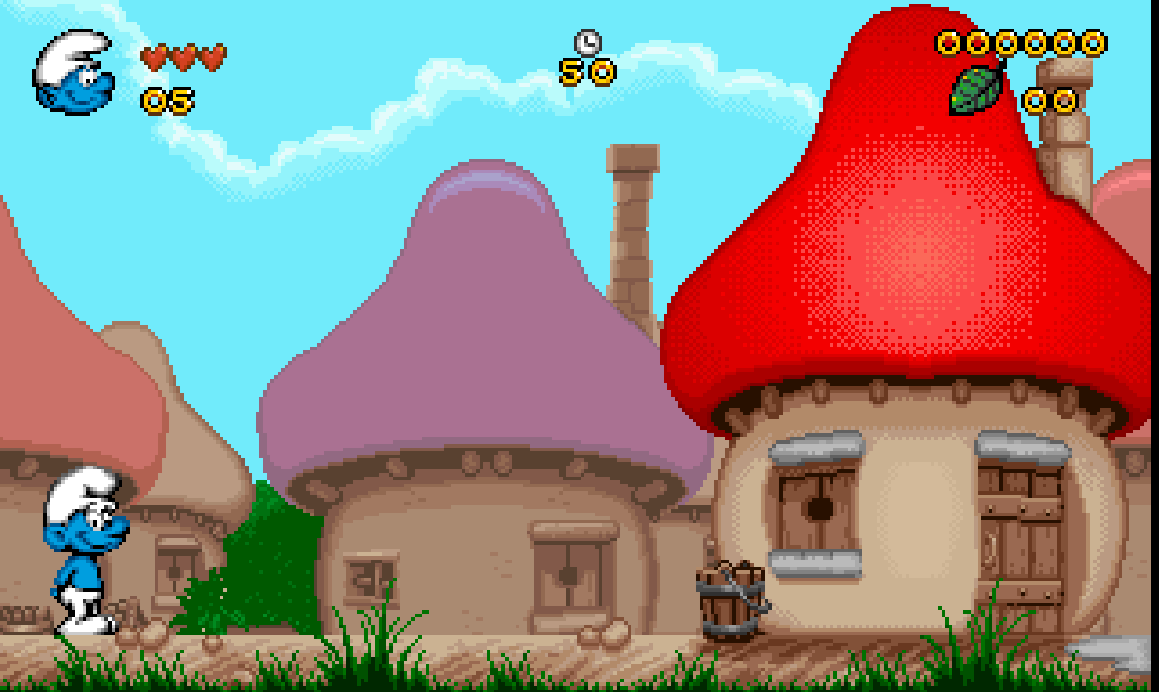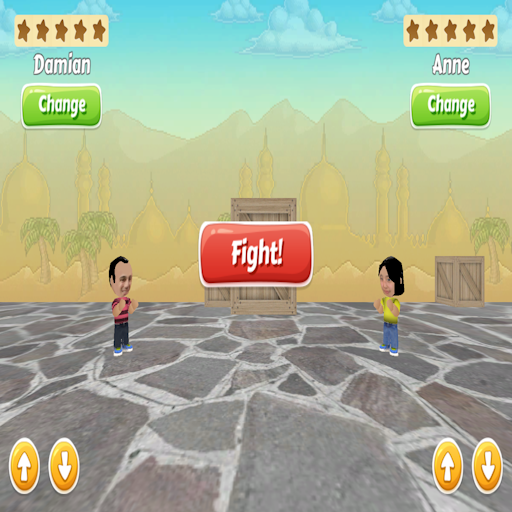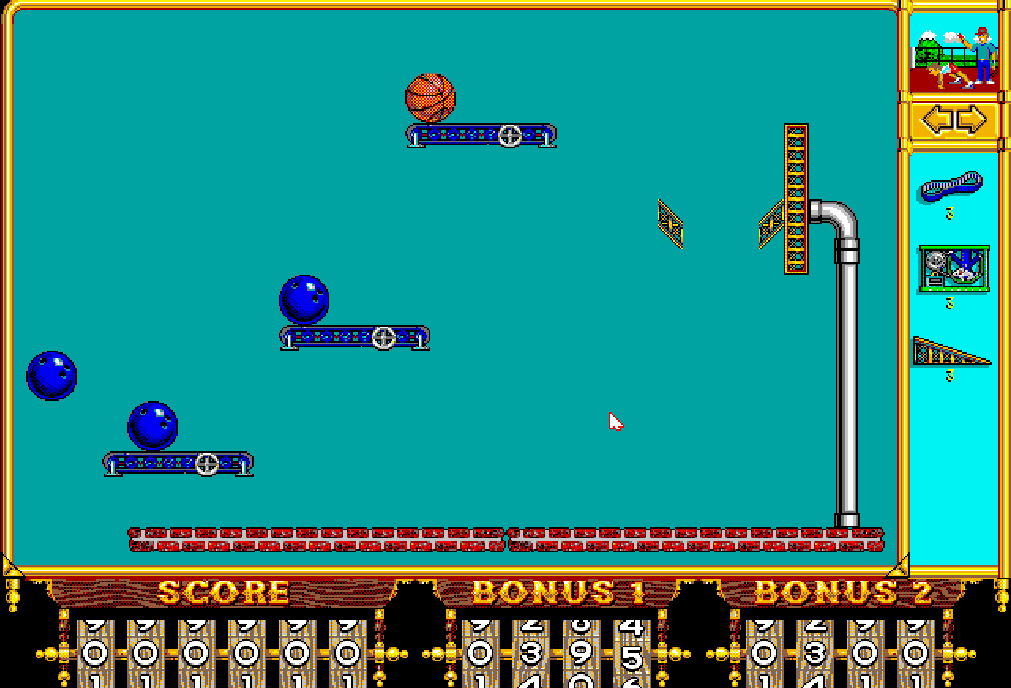Imagine booting up a computer to be greeted not by colorful icons or a fancy wallpaper, but by a stark black screen with a blinking white cursor. The screen reads C:\>, waiting for you to type a command. For a generation of early PC users, this was computing. That simple prompt was a gateway to everything – from serious work tasks to launching legendary games. MS-DOS (short for Microsoft Disk Operating System) ruled this era as the software foundation of personal computing. It was quirky and text-based, yet it powered an explosion of creativity and fun, especially in the form of classic DOS games. This is the story of how MS-DOS came to be, how it dominated the PC world, the unforgettable games it enabled, and how projects like DOSBox are keeping that legacy alive today.
The Origin Story of MS-DOS: From Seattle to the World
Back in 1980, the notion of a personal computer was just starting to take shape. IBM, the reigning giant of business computing, decided to create its first PC (internally code-named "Project Chess"), and it needed an operating system. At the time, Digital Research’s CP/M was the dominant OS for microcomputers, but IBM’s attempt to license CP/M hit a snag – negotiations fell through when Digital Research balked at IBM’s terms. As the story goes, IBM’s reps were told the company’s founder, Gary Kildall, was “out flying” and unavailable. Whether or not that’s exactly true, IBM walked away without a deal.
Enter a tiny software company named Microsoft. IBM approached Microsoft initially for computer languages (like BASIC), but with CP/M off the table, they asked Bill Gates if Microsoft could provide an OS too. Microsoft didn’t actually have an operating system at that moment – but Gates knew of one that might do. A local programmer, Tim Paterson at Seattle Computer Products, had created a crude 16-bit OS called QDOS (Quick and Dirty Operating System) as a stopgap until CP/M could be adapted for new Intel chips. Seeing an opportunity, Microsoft struck a deal to buy QDOS for a modest sum (initially licensing it for $10,000, then later purchasing it outright for about $50,000). Microsoft hired Paterson, tweaked QDOS into MS-DOS 1.0, and offered it to IBM for the upcoming PC.
When the IBM PC launched in August 1981, it came bundled with IBM’s version of the Microsoft software, called PC-DOS 1.0, on a floppy disk. Nobody could have predicted how monumental this moment was. MS-DOS wasn’t flashy – it had a simple command-line interface and could barely use more than 64KB of memory at first – but it was about to ride the wave of the PC revolution. Crucially, Microsoft’s contract with IBM allowed Microsoft to sell MS-DOS to other hardware makers as well. IBM, focused on hardware sales, didn’t insist on exclusive rights to the operating system. This “clever clause” turned MS-DOS into a gold mine: within a year Microsoft had licensed MS-DOS to 70+ other companies building IBM-compatible PCs. In other words, MS-DOS became the standard software brain of virtually every IBM clone computer. This savvy move “changed the course of technology history” by letting Microsoft – not IBM – control the PC software platform.
MS-DOS Takes Over: The OS That Made Personal Computing Personal
Through the 1980s, MS-DOS grew from a rough little program into the backbone of personal computing. With IBM’s open hardware architecture and Microsoft’s freely licensed DOS, countless manufacturers jumped into the PC market. Soon MS-DOS was running on millions of computers worldwide, from office IBMs to no-name home clones. In fact, for a considerable period MS-DOS was “the most widely used computer program in the world,” as one history puts it. Every clone maker – Compaq, Dell, HP, and many more – shipped their systems with MS-DOS. By the late ’80s, an MS-DOS machine was the default notion of a personal computer.
What made DOS so influential? For one, it was relatively simple and approachable (at least for its time). You’d power on your PC, and DOS would present that C:\> prompt, ready to accept commands. You typed instructions like COPY to move files, TYPE to display a file’s text, or the magic word GAME (if you had cleverly added it to launch your favorite title). There was no mouse, no windows (at least until much later) – you interacted with the computer by typing, which gave a certain sense of control and even intimacy with the machine. It also meant you had to learn a bit, and many kids and adults in the ’80s grew into hackers (the good kind) by editing batch files or configuring DOS to make things work.
MS-DOS’s success also shaped the software industry. A huge ecosystem of DOS-compatible software flourished – business programs like Lotus 1-2-3 and WordPerfect, development tools, and of course, games. DOS had its limitations (like the infamous 640KB conventional memory limit that advanced users struggled with), but over successive versions (2.0, 3.3, 5.0, 6.22, etc.) it gained features and remained backwards-compatible enough that old software kept working. By 1990, if you were writing software or making a game for PCs, you targeted MS-DOS. It was the common denominator across millions of machines.
It’s worth noting that MS-DOS was essentially the platform on which early versions of Windows ran as well – Windows 3.1 in 1992 was not a standalone OS but an environment that sat on top of DOS. Even Windows 95, which introduced a graphical shell and more independence, still had DOS under the hood for legacy support. So DOS was quietly powering things well into the mid-90s. This longevity meant that an entire generation of computer users and developers cut their teeth on MS-DOS, learning its commands, its quirks, and its capabilities by heart.
And what did many of those millions of DOS users do with their PCs when the work was done and nobody was looking? They played games!
Gaming Enters the Command Line: The Rise of DOS Games
In the 1980s and early 90s, MS-DOS was the backbone of PC gaming – the era’s often unsung hero behind the fun. Sure, there were other platforms (the Nintendo Entertainment System was huge for console gaming, and home computers like the Commodore 64 and Amiga had their own great games). But PCs running DOS were where some of the most innovative leaps in game design happened. On DOS, developers could push the limits of what computers could do: 3D graphics, sprawling open-ended worlds, complex simulations – it was all unfolding on that blinking command line.
Early DOS games in the 1980s were humble. Graphics started as simple colored text or blocky 4-color CGA visuals. Yet even with those limitations, creativity ran wild. Classics like Zork (a text adventure with no graphics at all) showed that imagination beat fancy visuals. As hardware improved – IBM introduced the EGA graphics standard in 1984, then VGA in 1987 – DOS games quickly leveled up. By the late ’80s, DOS games could display 16 or even 256 colors and play rudimentary sound and music through gadgets like the AdLib or Sound Blaster cards. Suddenly the PC could create vibrant worlds, not just spreadsheets.
One big catalyst for DOS gaming’s growth was the shareware model. In the late ’80s, small developers began distributing games online (via dial-up bulletin board systems) or on disks in magazines, letting people play part of the game for free. If players liked it, they could mail order the full game. It was a try-before-you-buy system that thrived on DOS. As PC World recounts, the shareware method evolved from freely giving away entire games in hope of donations to a smarter approach of giving a free episode as a teaser and selling the rest. This “golden age of PC shareware” lasted less than a decade but produced thousands of titles and changed gaming distribution forever. Crucially, it allowed bedroom coders and upstart studios to find an audience without a big publisher – a perfect fit for the open MS-DOS world.
Perhaps the most famous shareware pioneers were Apogee Software and a ragtag group of programmers who would become id Software. In 1990, Apogee released a colorful side-scrolling DOS platformer called Commander Keen as shareware. It was a revelation – “an animated feast of bouncy color” that looked like nothing before on an IBM PC. Until then, smooth scrolling and cartoon-quality graphics were thought to be the domain of game consoles like Nintendo. The Keen developers (led by John Carmack and John Romero) actually devised a clever technical trick using EGA graphics to mimic console-style smooth scrolling on the PC. It worked brilliantly, and Commander Keen felt like having a Nintendo on your DOS computer. It became a hit, signaling that PC/DOS gaming had truly arrived for the masses. In fact, Apogee stuck with the older 16-color EGA graphics in those years specifically to reach the widest PC audience and leverage tricks like Carmack’s scrolling routine. It paid off with Keen and other EGA-era hits like Duke Nukem and Cosmo’s Cosmic Adventure that were hugely popular in shareware form.
From that point on, DOS games exploded in number and ambition. Every year brought leaps: By 1992, PCs (with VGA graphics and sound cards) were hosting advanced games that could rival arcade machines. A small first-person shooter called Wolfenstein 3D came out as shareware in ’92 and practically invented a genre overnight – the first-person action game. It was so influential that it “truly put the PC on the map as a viable gaming platform — one that would remain that way for the rest of eternity,” as one retrospective boldly states. In 1993, id Software followed up with DOOM, a game that became nothing less than a legend. DOOM was distributed via shareware to millions and is often called “the granddaddy of all first-person shooter games”. It had fast 3D-ish graphics, networked multiplayer (you could battle your friends by linking PCs together), and an intensity no one had seen before. Offices and universities saw their networks bog down as everyone started blasting demons in DOOM after hours.
At the same time, DOS saw hits across every genre: Adventure games like Monkey Island and King’s Quest combined storytelling and puzzles with charming visuals. Role-playing games like Ultima and Wizardry, and later Fallout, let players lose themselves in epic quests. Strategy got a huge boost with Sid Meier’s Civilization (1991), which one writer calls “one of the most important DOS games ever made” for birthing a franchise that’s still going strong. Civilization proved that games could be cerebral and endlessly replayable, not just twitchy action. Simulations thrived too – from Flight Simulator to SimCity, players used DOS PCs to pilot jets or build entire cities. In fact, SimCity 2000 (1993) was so advanced for its time that even those who didn’t play had to admire how it made mayors out of gamers, managing everything from budgets to alien invasions.
By the mid-90s, the DOS gaming library was a treasure trove. Every new game pushed boundaries: Dune II (1992) essentially created the real-time strategy genre that later fueled Warcraft and Command & Conquer. X-COM: UFO Defense (1994) mixed strategy and suspense in a way that still inspires games today. Alone in the Dark (1992) laid groundwork for 3D survival horror. And let’s not forget the countless quirky or humorous titles – from Leisure Suit Larry (the cheeky adult comedy adventure) to Scorched Earth (the “mother of all tank battles” artillery game) – that made the rounds on schoolyard disks.
Perhaps the most endearing aspect of DOS gaming is how experimental it was. Developers were inventing the playbook as they went. They had to optimize games to squeeze into limited memory and adapt to a wild variety of hardware (every PC could be a little different). This forced ingenuity and resulted in games that were extremely optimized and innovative. Many modern game genres trace their lineage to those DOS days. As one article notes, “Devs were building games for DOS while pushing boundaries... effectively laying down the groundwork for modern gaming as we know it today.”.
Classic DOS Games That Defined an Era
It’s hard to choose from the hundreds of classics, but here are some notable DOS games that captured the spirit of the era and left a lasting legacy:
-
DOOM (1993) – The iconic first-person shooter that popularized 3D graphics and network multiplayer. DOOM had players blasting through demon-infested bases with adrenaline-pumping speed. Decades later, it’s remembered as gaming royalty for essentially kickstarting the FPS genre.
-
Wolfenstein 3D (1992) – A precursor to DOOM from the same team, it put players in a 3D maze of Nazi soldiers. It was crude by today’s standards but revolutionary then – Wolf3D proved the PC could do immersive action, and its success showed there was no going back.
-
Prince of Persia (1989) – A cinematic platformer famous for its fluid character animations (achieved via rotoscoping). Prince of Persia was unlike anything seen before, with smooth running, jumping, and sword-fighting that felt almost lifelike. Its design influenced countless platformers and eventually led to a 3D reboot years later.
-
Sid Meier’s Civilization (1991) – The turn-based strategy game that let players guide a civilization from the Stone Age to the Space Age. It was deeply addictive and intelligent, proving that strategy and empire-building could be just as engaging as action. Its innovative gameplay charted the course for years to come in strategy games.
-
SimCity (1989) / SimCity 2000 (1993) – Will Wright’s city-building simulations that made urban planning fun. SimCity 2000 in particular dazzled players with its complexity and isometric graphics, letting anyone play mayor and architect of a thriving metropolis.
-
Monkey Island series (1990-1992) – Comedy point-and-click adventures (by LucasArts) that were beloved for their witty writing and clever puzzles. The Secret of Monkey Island and its sequel brought piratey humor to DOS, introducing us to Guybrush Threepwood and the art of insult sword-fighting.
-
Wing Commander (1990) – A space combat simulator by Origin Systems that felt like playing a starring role in a Star Wars-like saga. It pushed VGA graphics to the max with cinematic storytelling and dogfights between starships. Wing Commander also demanded every bit of your DOS PC’s power – many of us recall tweaking memory settings just to make it run.
-
Dune II: The Building of a Dynasty (1992) – The grandfather of real-time strategy games. Set in Frank Herbert’s Dune universe, it tasked players with building bases, harvesting resources, and commanding armies in real time. It essentially wrote the template that Command & Conquer and Warcraft would later follow.
-
X-COM: UFO Defense (1994) – A masterful blend of strategy and tactics, where you manage an organization defending Earth from aliens, then command turn-based tactical missions to shoot down and capture the extraterrestrial invaders. It had deep strategy, permadeath for soldiers, and a haunting atmosphere that still earns it “all-time best game” nods.
-
The Oregon Trail (1990 MS-DOS port) – An educational survival game that ironically became a cultural icon. Guiding a wagon of settlers across the Wild West, players had to make tough choices and oftentimes watched their party perish of disease or starvation. It’s chiefly remembered for the infamous phrase “You have died of dysentery,” perhaps the worst words any 8-year-old could read on the screen back then – and a prime example of how even a simple DOS game could etch itself into pop culture memory.
(Many more could make this list – from Ultima and Might & Magic (RPG classics), to Star Control 2, Tie Fighter, Alone in the Dark, Duke Nukem 3D, Warcraft II, and beyond. The DOS era truly overflowed with gems.)
These games not only define DOS gaming – many of them changed gaming period. Franchises born on DOS, like Doom, Civilization, SimCity, Prince of Persia, Warcraft/StarCraft, and Grand Theft Auto, continue to this day. Yes, even Grand Theft Auto began on DOS: the original GTA was released for MS-DOS in late 1997 as well as Windows, showing that DOS’s influence extended well into the late ’90s. The fact that so many of these titles still get remasters, spiritual sequels, or fan projects speaks to the enduring appeal of what DOS games offered – often gameplay over glitz, innovation within constraints, and tons of personality.
Tales from the DOS Era: Floppy Disks, Tweaks, and Triumphs
The world of MS-DOS and DOS games came with its own share of quirky anecdotes and memories that anyone from that time fondly (or painfully) recalls. Here are a few snapshots from the life of a DOS gamer that capture the era’s unique flavor:
-
The Floppy Disk Shuffle: Before the internet took off, sharing games meant swapping floppy disks with friends (or sometimes sneakernet at school). Many a gamer remembers triumphantly bringing home a borrowed game only to face a frustration like one kid in the ‘90s who copied just a game’s shortcut to a floppy – not the game itself – and learned the hard way it wouldn’t run. Copying games often required multiple 3.5" disks and patience. Installing a big game meant disk swapping: “Please insert Disk 2… Disk 3… Disk 4…” – a ritual equal parts exciting and tedious.
-
Tweaking Autoexec.bat and Config.sys: DOS taught us basic programming whether we liked it or not. To get some games to run, you had to free up enough conventional memory (that magical first 640KB). This led to endless tinkering with startup files – disabling drivers, optimizing memory managers, creating special boot disks – just to squeeze out another 30KB of free RAM so that Wing Commander wouldn’t crash. It was frustrating, but oh-so-satisfying when your custom boot configuration finally worked and the game sprang to life. This hands-on tinkering is how many future IT gurus got their start.
-
Bill Gates Meets DOOM: Perhaps one of the funniest crossover moments of tech and gaming history – in 1995, as Windows 95 was launching, Microsoft desperately wanted to prove Windows could be a gaming platform (traditionally, gamers stuck to pure DOS). To court the developer of DOOM, Bill Gates himself appeared in a tongue-in-cheek promotional video inserted into a DOOM level, wearing a trench coat and holding a shotgun. Yes, the world’s richest nerd playing action hero! In the video, Gates trumpets Windows 95’s advanced graphics by blasting a demon, bridging the gap between corporate software and gamer culture. It’s a legendary anecdote that showed even Microsoft knew the importance of DOS games like DOOM – and how badly they wanted to carry that magic forward into Windows.
-
“You Have Died of Dysentery.” The phrase is now an internet meme, printed on T-shirts and instantly recognized by millennials of a certain age. Back in the day, seeing those words on your monitor in Oregon Trail meant your journey west was sadly over – some unfortunate illness or calamity befell your party. It became an in-joke for students everywhere. As one writer humorously noted, “Those ominous words… were the worst words any eight-year-old could read on the screen while playing The Oregon Trail.” It’s a testament to how even educational DOS games left their mark on pop culture.
-
The BBS and Shareware Hunt: DOS gamers were pioneers of online communities before the web. They dialed into BBSes (Bulletin Board Systems) using their noisy modems to chat on message boards and, importantly, to download shareware games. Discovering a new game like Commander Keen or Doom on a local BBS felt like uncovering hidden treasure. You’d tie up the phone line for hours, downloading a 1MB game at 2400 baud (which could take an eternity), all for the thrill of trying the latest craze. The shareware scene had a real Wild West vibe – small postings with descriptions, maybe a README file, and a request to “please register for $15 if you enjoy the game.” It was an honor system that actually produced some huge hits.
All these little experiences – the fiddling, the fake bravado of Bill Gates with a pretend shotgun, the “dysentery” running joke, the thrill of a fresh shareware zip file – they paint a picture of a time when computing felt personal and hands-on. DOS gaming wasn’t always easy, but that was part of the adventure. Overcoming a technical hurdle or finding a new game by word-of-mouth made the eventual fun of playing even sweeter. It forged a tight-knit community of PC gamers who traded tips and helped each other on forums and school hallways. Those bonds and that spirit of experimentation have carried forward, influencing today’s gaming culture in ways big and small.
From DOS to DOSBox: Keeping the Classics Alive
By the late 1990s, the reign of pure MS-DOS was coming to an end. Windows 95 and 98 integrated DOS behind the scenes, and with Windows XP (2001), Microsoft fully transitioned to a modern 32-bit OS that dropped true DOS support. The last mainstream iteration of MS-DOS as a standalone product was essentially 6.22 (and DOS 7 was bundled in Windows 95/98). So as hardware and operating systems evolved, running old DOS programs became increasingly tricky. Many of those classic games no longer worked on contemporary machines... at least, not without help. Enter DOSBox – the savior of DOS gaming in the modern age.
DOSBox is a free, open-source DOS emulator that first debuted in 2002. It was created by a couple of developers (platform fans nicknamed “Qbix” and “Harekiet”) with the goal of reproducing a full DOS environment on current computers. Essentially, DOSBox emulates an IBM PC compatible computer in software – complete with the CPU, memory, disk drives, graphics and sound cards of the era – so that DOS programs think they’re running on an old machine. The brilliance of DOSBox is that it made running classic games practically plug-and-play again. Unlike early DOS emulation attempts which were clunky and limited, DOSBox was designed specifically with games in mind. It provides robust support for running DOS applications across multiple platforms. Windows, Mac, Linux – whatever you use today, you can likely install DOSBox on it.
Some key features made DOSBox the go-to solution for retro gaming fans:
-
High compatibility with DOS games: DOSBox implemented many chipset, graphics, and sound hardware standards of the 80s/90s (from CGA, EGA, VGA graphics to Sound Blaster and Gravis Ultrasound sound). This means it can run the vast majority of DOS games correctly – often out of the box. No more tweaking memory or config files; DOSBox can simulate expanded memory, various CPU speeds, etc., with simple settings.
-
Configurable CPU cycles: You can dial the emulated CPU speed up or down, which is crucial. Some games ran too fast on later CPUs (timing issues) while others needed horsepower – DOSBox lets you adjust “cycles” to get the right balance. It even has an auto mode to intelligently manage speed.
-
Sound and graphics support: Remember how you once needed the right drivers and sound card to hear music in a game? DOSBox emulates those devices, so you can enjoy Monkey Island’s MIDI tunes or Doom’s eerie sound effects without owning an ancient Sound Blaster card. Graphically, it can replicate text mode, CGA/EGA/VGA, and even more exotic modes, so everything from early text adventures to late-’90s VGA games display properly.
-
Cross-platform and lightweight: Being a program that can run on modern OSes, DOSBox eliminated the need to keep old hardware around. Even low-powered devices today are exponentially faster than ’90s PCs, so they can emulate DOS with ease. As one tech writer put it, “even a $100 phone today has significantly more hardware under the hood” than a top-of-the-line DOS machine, making it possible to run entire DOS games in a web browser now. DOSBox leverages that headroom so well that you can even use ports on Android or in the browser (via projects like jsDOS) to play classics on the go.
The result? Dos games got a second life. Hobbyists and nostalgic gamers embraced DOSBox throughout the 2000s to replay their childhood favorites. It became so standard that commercial services and publishers also started using it. For instance, digital stores like GOG.com (Good Old Games) re-release old DOS games packaged with DOSBox pre-configured, so they run seamlessly on a new Windows 11 PC as if it were 1993 again. In many cases, if you buy an old game on Steam or GOG, it’s quietly using DOSBox under the hood to make it work. In other words, DOSBox has been instrumental in software preservation, ensuring that these classic games aren’t lost to time or incompatible hardware.
Even beyond games, DOSBox has proven valuable for running legacy business or educational software, but gaming is really where it shines. Enthusiasts have built front-end launchers, custom versions (like DOSBox Staging or DOSBox-X with expanded features), and there’s a strong community continuously improving compatibility. Because Windows itself dropped the old NTVDM (NT Virtual DOS Machine) support in 64-bit systems (no 16-bit code allowed), DOSBox truly became the only convenient way to run DOS software on modern 64-bit Windows.
Today, thanks to DOSBox, the DOS era lives on vividly. You can fire up Prince of Persia or Commander Keen on a MacBook, or even play DOOM in your Chrome web browser via an emulator, without touching an actual floppy disk. It’s a bit magical – the entire environment is simulated, so those ancient games think your Core i7 processor is an old 33MHz 80386, and your fancy GPU is a S3 Verge with 2MB of video RAM. And they run beautifully.
Legacy and Nostalgia: Why MS-DOS and Its Games Still Matter
It’s been decades since MS-DOS was the king of PCs, yet its legacy is everywhere around us. MS-DOS laid the groundwork for the user experiences we take for granted today. It introduced millions to personal computing, taught a generation how file systems and commands work, and created the ecosystem from which Windows grew. Every time you open a command prompt on Windows (yes, that black box is literally a descendant of DOS) or use keyboard shortcuts, you’re echoing habits formed in the DOS era. Even the concept of the C: drive and lettered drives comes straight from MS-DOS’s way of organizing disks.
Most of all, the games of the DOS age have achieved immortal status in gaming history. They continue to inspire modern game developers and players. Franchises that started on DOS have evolved into blockbuster series. Doom’s DNA is in every FPS; Civilization’s template underpins countless strategy games; the humor and writing of Monkey Island set a bar for narrative in games. These titles are regularly cited in “Hall of Fame” lists, remastered for new platforms, or rebooted entirely for new audiences. For instance, Doom got a critically acclaimed reboot in 2016 (and that itself led to sequels), X-COM was reborn as the modern XCOM series, Wing Commander’s spirit lives in space sims like Star Citizen, and SimCity’s influence is evident in games like Cities: Skylines. The Grand Theft Auto series that became a cultural phenomenon in the 2000s can trace its origins to that first top-down DOS game in 1997.
Beyond direct lineage, there’s a charm and challenge to DOS games that keeps people coming back. The graphics may be pixelated and the sound just bleeps and bloops (or delightful MIDI tunes), but the gameplay often feels pure and rewarding. Without modern frills, developers had to focus on making the core game loop fun. As a result, many DOS games have aged like fine wine – easy to pick up and still surprisingly enjoyable. Additionally, the limitations bred creativity: horror games that scare with atmosphere instead of high fidelity, RPGs that evoke epic adventures with descriptive text and player imagination, strategy games that deliver depth without needing 3D graphics.
Thanks to efforts like DOSBox and digital game stores, it’s easier than ever to experience these classics today. In fact, because they’re so lightweight by today’s standards, you can run them on almost anything. Modern machines can emulate them in-browser or on a phone without breaking a sweat. There’s really “no excuse not to dive in,” as one modern reviewer quipped when highlighting how accessible DOS classics have become. Many titles have been released as freeware or found their way to sites like Archive.org’s Internet Archive, where you can actually play them via an embedded DOSBox in your web browser.
A Quick MS-DOS and DOS Gaming Timeline
To put the journey in perspective, here’s a brief timeline of major MS-DOS and DOS game milestones over the years:
| Year | Milestone |
|---|---|
| 1981 | IBM releases the IBM PC with PC-DOS 1.0 (MS-DOS) as its operating system, kicking off the PC revolution. |
| 1983 | Microsoft launches MS-DOS 2.0, adding support for hard drives and directories. The PC clone market is booming with many manufacturers now licensing MS-DOS. |
| 1984 | IBM’s Enhanced Graphics Adapter (EGA) debuts, allowing 16-color graphics. Early DOS games slowly adopt EGA, leading to more colorful visuals. |
| 1987 | VGA graphics (256-color) and the IBM PS/2 arrive, raising the bar for game graphics. Sound Blaster cards (1989) soon bring dynamic sound to DOS games. |
| 1990 | Wolfenstein 3D prototype developed (as Catacomb 3-D); Commander Keen shareware released, proving PC platformers can work. MS-DOS 5.0 also arrives with improvements. |
| 1992–93 | The shareware FPS boom: Wolfenstein 3D (1992) and DOOM (1993) by id Software set new standards for action games and are played worldwide. Meanwhile, DOS 6.0/6.22 come out, the last standalone DOS versions. |
| 1995 | Windows 95 launches, integrating DOS and a new GUI. Gamers still often exit to DOS for better performance, but Windows is clearly the future. Bill Gates appears in a DOOM promo video, a nod to DOS gaming’s importance. |
| 1997 | The original Grand Theft Auto releases on MS-DOS and Windows – one of the last big DOS-hybrid game launches. Most new games are now targeting Windows 95/98 or consoles. |
| 2001 | Windows XP (NT-based) drops native DOS support (no more easy boot to DOS). The need for emulation becomes evident if old games are to run. |
| 2002 | DOSBox 0.31 released. DOS emulation goes mainstream, enabling a renaissance of classic gaming on modern systems. Over the next two decades, DOSBox becomes the standard for running DOS software. |
| 2010s | Digital distribution of old games (via GOG, Steam) commonly bundles DOSBox. Web-based DOS emulators and mobile ports appear, making DOS games accessible to a new generation. |
| 2020s | Enhanced forks like DOSBox Staging, and integration into things like the Internet Archive’s website allow instant play of DOS games online. The MS-DOS source code has even been opened up in parts (Microsoft open-sourced MS-DOS 1.25 and 2.0 on GitHub), cementing its status as a historical artifact for study and nostalgia. |
Conclusion: MS-DOS Lives On in Our Hearts (and Hard Drives)
The tale of MS-DOS and DOS games is a foundational chapter in the story of personal computing. What began as a “quick and dirty” operating system hurriedly bought for an IBM project ended up conquering the computing world and nurturing a generation of innovative software and games. MS-DOS transformed the PC from a hobbyist curiosity into a global phenomenon, and in doing so, it unlocked imaginations everywhere – from developers who realized they could create whole worlds with code, to kids who discovered those worlds with wide-eyed wonder.
Even today, if you listen closely, you can hear echoes of the DOS era. It’s in the stirring MIDI soundtrack of an old game that someone remixes on YouTube. It’s in modern game designers citing X-COM or Doom as their inspiration. It’s whenever you see a playful reference like “press any key to continue...” or a C:\ drive easter egg in a movie. And thanks to DOSBox and preservation efforts, we’re not just limited to memories – we can experience DOS and its games first-hand, exactly as they were, anytime we like. With a few clicks, that ancient C:\> prompt comes back to life on our 4K screens, and we can hop into a round of Commander Keen or Leisure Suit Larry as if we were back in the ’90s.
There’s a unique joy and satisfaction in revisiting these classics. They remind us of a time when computing felt new and full of possibility – when every software launch felt like a small adventure (will this work? what will it do?). They also show how far we’ve come; consider that your phone can now emulate in seconds what used to tax an entire beige PC tower. The contrast makes one appreciate the ingenuity of those early developers even more.
In the end, the history of MS-DOS and DOS gaming isn’t just about technology or software versions. It’s about the people and the culture that formed around it. It’s about Bill Gates seeing a golden opportunity where others didn’t, and young programmers in dim offices in Shreveport changing the world with colorful pixelated characters. It’s the story of gamers swapping tips at recess, of garage entrepreneurs distributing games via bulletin boards, and of the birth of genres that would define an industry. It’s proof that from simple beginnings – just a command prompt and a blinking cursor – can arise an entire universe of creativity.
So here’s to MS-DOS, the little OS that could. And here’s to the games that turned millions into lifelong computer enthusiasts. In an age of virtual reality and ultra-high-definition graphics, we still delight in the blocky aliens of Space Invaders clones, the nerve-wracking text “You have died of dysentery.”, and the thrill of typing C:\> cd doom then doom.exe and hearing the floppy drive grind away. The fact that we can still do that in 2025 and have it feel just as fun is a testament to the enduring magic of the DOS era.
Now if you’ll excuse us, that C:> prompt is beckoning – there are some demons that need slaying in E1M1. Happy retro gaming!
https://opensea.io/eyeofunity/galleries
